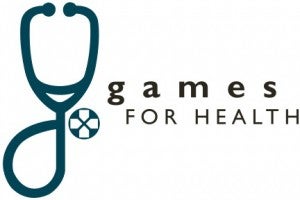 When the Robert Wood Johnson Foundation began working with researchers in 2004 to study how video and online games could be used to promote health, there was very little interaction between the two industries.
When the Robert Wood Johnson Foundation began working with researchers in 2004 to study how video and online games could be used to promote health, there was very little interaction between the two industries.
“We noticed that people tended to play games for a long time and that they learned how to operate and thrive in very complex social environments, and that learning appeared to be very sticky. We decided to bring games into health care and see where we could use them to help patients do a better job of managing chronic disease,” Paul Tarini, a senior program officer at the Robert Wood Johnson Foundation, said during a keynote talk this week at “The Impact of Games and Play on Health.” The conference was organized by the Center for Public Health Initiatives at the University of Pennsylvania.
The foundation invested in two key areas: research into how new and existing games could be incorporated into the treatment and maintenance of patients with chronic health conditions, and efforts to bring together experts from the health care and gaming fields to see how the two industries could work together.
Researchers from Long Island University studied how the video game Dance Dance Revolution could be used to help people with Parkinson’s disease increase their balance and motor coordination. A team at the Children’s Hospital of Philadelphia designed a game to help children on the autism spectrum learn to recognize nuances in faces and facial expressions. “Games aren’t a magic bullet,” Tarini said. “They have to be a part of something larger. And games don’t need to be expensive and have high production value, but they do need to be fun. Games that aren’t fun to play are failures.”
As technology and the health care industry continue to mature, however, Tarini said the conversation is shifting from the use of gamification in relation to specific diseases to how it could be used to create healthier overall populations. “There’s a higher level of interaction, of people saying … ‘How can I get games to help health care outcomes at scale?’ How can we build games about probability and risk that can change the nature [of the way] people approach HIV or to reenergize immunization campaigns?”
The family doctor used to be a patient’s primary source of information and understanding about his or her health. But the growth of social networks and sophisticated data systems make it easier than ever for health care professionals and patients to share knowledge and gain support from their peers, Tarini said. In that context, games can be one of the connectors that incorporate a plan for good health into all the related facets of a person’s life, he added. “We have an opportunity to use games to rework the basic foundation of health care. The system is designed to treat disease…. But we all know that health is much more than the absence of disease.”
To read more about how other industries, in addition to health care, are investing in gamification, check out this special report from Knowledge at Wharton and this recent post from KnowledgeToday.



